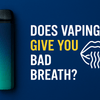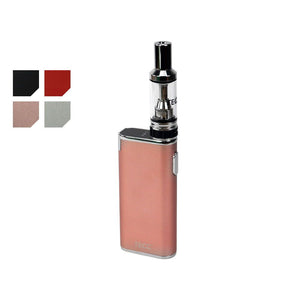Breaking Free from Vape Addiction: Your Guide to Recovery

Breaking Free from Vape Addiction: Your Guide to Recovery
Imagine a life without the constant need for nicotine and the endless vapour. It's a dream for many vapers in the UK, who want to get their health back. This guide will help you understand vape addiction and find ways to overcome it.
Key Takeaways
- Understand the nature of vape addiction and how it differs from traditional cigarette addiction
- Recognise the physical, emotional, and psychological signs of vape dependence
- Explore the health risks associated with long-term vaping and the importance of cessation
- Discover effective strategies for quitting vaping, including nicotine replacement therapy and support systems
- Learn coping mechanisms to manage cravings and prevent relapse
Understanding Vape Addiction
Vape addiction is a big worry, especially for young people. It's different from smoking addiction. We'll look into what vape addiction is, how it differs from smoking, and why vaping is so popular.
What is Vape Addiction?
Vape addiction, or e-cigarette addiction, happens when someone can't stop using e-cigarettes or vaping devices. These devices have nicotine, which is very addictive. It can make people feel like they need to keep using it, even if it's bad for their health.
The Differences Between Vape and Cigarette Addiction
- Vaping devices give nicotine faster than cigarettes, making it more addictive.
- Many teens think vaping is safer than smoking, which makes them more likely to try it.
- Vaping is seen as cool by many young people, making it more popular.
Why Do People Start Vaping?
There are many reasons why teens and young adults start vaping. Some reasons include:
- They're curious and want to try new things.
- They think vaping is healthier than smoking.
- Vaping is easy to get and not very expensive.
- The flavours and designs of vaping devices are appealing to young people.
- They want to fit in with their friends.
It's important to understand vape addiction to help people overcome it. By knowing why vaping is so popular, we can support those trying to quit.
Signs and Symptoms of Vape Addiction
It's important to know the signs of vape addiction to tackle this growing health issue. Vaping might seem safer than smoking, but it can lead to a serious addiction. This addiction affects both your body and mind.
Physical Signs of Addiction
One clear sign of e-cigarette dependence is physical withdrawal when you try to stop. You might feel:
- Irritability, restlessness, and mood swings
- Headaches, dizziness, and nausea
- Difficulty concentrating and poor sleep quality
- Increased heart rate and blood pressure
- Tremors, sweating, and general discomfort
Emotional Indicators of Dependence
There are also emotional signs of vape addiction. These include:
- A strong, persistent craving for the e-cigarette, even when not in use
- Spending excessive time and money acquiring and using the device
- Neglecting other important responsibilities or activities in favour of vaping
- Feeling anxious, depressed, or irritable when unable to vape
- Unsuccessful attempts to cut down or quit vaping despite the desire to do so
Spotting these signs is the first step to fight vape addiction. Knowing the symptoms helps you find support to overcome this addiction.
| Physical Signs | Emotional Indicators |
|---|---|
| Irritability, restlessness, and mood swings | Strong, persistent craving for e-cigarette |
| Headaches, dizziness, and nausea | Spending excessive time and money on vaping |
| Difficulty concentrating and poor sleep quality | Neglecting other responsibilities for vaping |
| Increased heart rate and blood pressure | Feeling anxious, depressed, or irritable when unable to vape |
| Tremors, sweating, and general discomfort | Unsuccessful attempts to quit vaping |
By spotting these vape addiction symptoms, you can start to fight your e-cigarette dependence. This helps you take back control of your health and well-being.
Health Risks Associated with Vaping
Vaping has become very popular, but it raises health concerns. It's seen as safer than smoking, but it has its own risks. Users need to know about these dangers.
Short-Term Effects on Health
Vaping can harm your lungs right away. The chemicals and flavourings in e-cigarettes can irritate them. This can lead to vape lung injury, a serious lung inflammation.
Users might also cough, wheeze, or have trouble breathing. The nicotine and other substances in vaping products can also affect your heart. They can make your heart rate and blood pressure go up, increasing heart risks.
Long-Term Consequences of Vaping
- Potential development of vape health risks such as lung disease, including a condition similar to "popcorn lung"
- Increased risk of stroke and heart attack due to the impact on the cardiovascular system
- Possible links to the development of certain types of cancer, though more research is needed in this area
- Addiction to nicotine, leading to a lifelong dependence on vaping or other nicotine products
More research is needed on vaping's long-term effects. But it's clear vaping comes with risks. If you vape or think about it, consider these risks. Seek advice from health professionals to make smart choices for your health.
The Psychological Aspect of Vape Addiction
Exploring the psychological reasons behind vape addiction is key to grasping this widespread problem. Vaping is seen as a safer choice than smoking, but it can become a habit for stress relief or to fit in. The appeal of vaping isn't just the nicotine but also the ritual and feeling of belonging it offers.
Understanding the Mental Triggers
Vaping can be a way to cope with mental health issues. The act of vaping gives a quick relief or calm, acting as a distraction. But, this relief can turn into addiction, with users reaching for their devices in stressful or boring times.
The Role of Stress in Vaping Habits
- Stress is a big reason why people vape, as it's seen as a way to handle anxiety or depression.
- The vaping ritual and the release of dopamine give a temporary calm, making the behaviour more likely to continue.
- Stress makes it hard to stop vaping, as cravings and withdrawal symptoms get worse during stressful times.
It's important to understand the psychological side of vape addiction to find ways to overcome it. By tackling the mental triggers and stress, people can break free from vape addiction.
Preparing for Recovery
Starting to quit vaping can feel scary, but you can do it. First, set clear goals for stopping vaping. These goals should be specific, measurable, and achievable. This helps you track your progress and stay motivated.
Setting Realistic Goals for Quitting
Think about your vaping habits, nicotine dependence, and lifestyle when setting goals. Don't aim too high to avoid feeling let down. Instead, aim for small, steady changes to cut down your vaping gradually.
- Choose a specific date to quit, giving yourself time to get ready mentally and emotionally.
- Count how many vape pods or cartridges you use daily. Try to cut down by a certain percentage each week.
- Find out when you usually vape and find healthier things to do instead.
Understanding Your Vaping Triggers
It's key to know what makes you want to vape. Keep a journal to track your triggers. Then, plan how to handle them. This helps you deal with cravings better.
| Common Vaping Triggers | Strategies to Overcome Them |
|---|---|
| Stress and anxiety | Try relaxation methods like deep breathing or meditation. |
| Social situations | Find non-vaping activities to do with friends. |
| Boredom or habit | Discover new hobbies or activities to keep you busy. |
By setting realistic goals and knowing your vaping triggers, you're on the path to quitting. The journey might have its challenges, but with the right mindset and strategies, you can overcome them. You'll regain your health and well-being.
Strategies for Quitting Vaping
Stopping vaping can seem hard, but it's doable with the right plan. There are two main ways to quit: cold turkey and gradual reduction.
Cold Turkey vs. Gradual Reduction
The cold turkey method means stopping vaping right away. It's tough because you face nicotine withdrawal quickly. Yet, some find it helps them stay focused and determined.
The gradual reduction method is about slowly cutting down on nicotine. It's easier for some because it lets your body adjust slowly. This way, you might avoid harsh withdrawal symptoms.
The Role of Nicotine Replacement Therapy
Nicotine replacement therapy (NRT) is a big help in quitting vaping. NRT products like patches or gum give you nicotine in a safer way. They help reduce cravings and withdrawal symptoms.
It's wise to talk to a doctor about NRT. They can help pick the right product and dose for you. This makes quitting easier.
Choosing between cold turkey and gradual reduction depends on you. So does using NRT. The most important thing is to pick what feels right for you. Stay committed to quitting vaping.
Support Systems for Recovery
Overcoming vape addiction is tough, but you're not alone. Getting professional help and building a support network are key steps. These resources can help you quit vaping and stay vape-free.
Importance of Seeking Professional Help
Professional support is vital for vaping cessation. Doctors and addiction counsellors can guide you with tailored advice and treatments. They help manage cravings, address underlying issues, and develop strategies for success.
Building a Support Network
A strong support network can change your recovery journey. Talk to family and friends who support your decision to quit vaping. Join local or online support groups to connect with others who understand your struggles.
- Look for vaping cessation support groups in your area or online forums.
- Be open with your loved ones about your vaping cessation goals and ask for their support.
- Find trusted mentors or former vapers who have quit vaping and can offer advice.
With professional help and a supportive network, you can boost your chances of quitting vaping and living a healthier life.
Coping Mechanisms for Cravings
Overcoming vape addiction is tough, but the right strategies can help. Whether you're quitting or have started, having effective ways to manage cravings is key. It's important to have a toolkit to help you through nicotine withdrawal.
Mindfulness and Meditation Techniques
Mindfulness and meditation are great tools to help you quit vaping. They make you more aware of your thoughts and feelings. This helps you see your cravings without acting on them.
Try short mindfulness exercises daily, like deep breathing or body scans. These can create a gap between craving and action. This gives you time to choose a healthier option.
Physical Activities to Distract from Cravings
When you feel like vaping, do something physical to distract yourself. Activities like walking, working out, or hobbies can help. They break the cycle of cravings effectively.
- Take a short, energising walk around the block or up and down the stairs.
- Try a simple stretching routine or a few minutes of light exercise, such as jumping jacks or high knees.
- Immerse yourself in a hands-on activity, like gardening, crafting, or playing a musical instrument.
Positive, productive activities engage your body and mind. They help you focus away from cravings until they pass.
Relapse Prevention Techniques
Beating vape addiction is a tough journey. It needs determination, resilience, and smart strategies to avoid falling back. As you move towards a vape-free life, spotting potential triggers is key. Having a solid plan to stay on course is also crucial.
Recognising Relapse Triggers
The first step is to find out what might make you vape again. These could be:
- Stress or anxiety
- Social events where vaping is common
- Boredom or not having anything to do
- Seeing someone vape
- Feeling down or going through tough times
Developing a Relapse Action Plan
After spotting your triggers, it's time to make a detailed plan. This plan should help you deal with these situations. It might include:
- Learning to manage stress, like through meditation
- Steering clear of places where vaping is common, or having a plan to leave
- Doing something fun or active to keep your mind and hands busy
- Talking to friends, family, or a counsellor for support
- Remembering your progress and why you wanted to quit vaping
Relapse is a normal part of recovery. It doesn't mean you've failed. Being proactive and having a good plan can help you stay vape-free for good.
"The key to preventing relapse is to anticipate and prepare for the challenges you may face. With the right tools and support, you can overcome any obstacle on your journey to a vape-free life."
The Role of Diet and Nutrition in Recovery
Recovering from vape addiction is a journey that involves many steps. Diet and nutrition are key in this process. The right foods and staying hydrated can help a lot.
Foods That Help in Overcoming Cravings
Some foods are great for fighting vape cravings. Adding these to your diet can help you stay on track:
- Fresh fruits and vegetables, like carrots, celery, and apples, are full of fibre. They can help with cravings.
- Proteins from lean meats, fish, and legumes help keep blood sugar stable. This can reduce cravings.
- Whole grains, such as oats, quinoa, and brown rice, give you energy for a long time.
- Nuts and seeds are full of healthy fats. They offer a crunchy snack that can replace vaping.
Staying Hydrated: Its Importance
Drinking enough water is also very important. Dehydration can make withdrawal symptoms worse. Staying hydrated helps your body detox and reduces cravings.
Drink at least 8 glasses of water a day. Try herbal teas, infused waters, or electrolyte drinks for extra hydration.
"Proper nutrition and hydration are essential foundations for successful vape addiction recovery. By nourishing the body and mind, individuals can strengthen their resilience and increase their chances of achieving long-term freedom from nicotine withdrawal."
Success Stories: Real Recovery Journeys
Beating vape addiction is tough, but many have found freedom. Their stories show us how to overcome this habit. We look at their journeys, learning from their successes and strategies.
Inspiring Accounts from Former Vapers
Emma, 32, from London, talks about quitting: "I started vaping to avoid smoking, but it turned into an addiction. The cravings were hard to fight. Getting help and joining a support group helped me stop."
John, 28, from Manchester, shares his experience: "Quitting vaping was tough, but it was worth it. The first weeks were hard, but with family support and nicotine therapy, I beat my addiction."
Lessons Learned from Their Experiences
- Getting professional help and joining a support group is key to quitting.
- Nicotine replacement therapy helps with withdrawal symptoms and cravings.
- Understanding why you vape, like stress or peer pressure, is important for success.
- Recognizing small victories helps keep you motivated on your recovery journey.
These stories and lessons show the strength of determination and the need for a full approach to quitting. By sharing their journeys, these former vapers encourage others to start their own path to a healthier life.
Resources for Additional Support
Quitting vaping can be tough, but you're not alone. The UK offers many resources to help you stop vaping. From helplines to online groups, these tools can be a big help.
Helplines and Online Resources
Starting with support means calling helplines for vaping help. These services have experts who give advice and help find local support. Some top helplines in the UK are:
- Smokefree National Helpline: 0300 123 1044
- NHS Smoke-free Helpline: 0300 123 1044
- Action on Smoking and Health (ASH) Helpline: 0207 404 0242
Online, you can find lots of help too. Sites like NHS Smokefree and Quit Vaping UK have lots of info and tools to help you quit.
Support Groups and Community Initiatives
Local support groups and programmes are also great. They offer a place to share and learn from others. Here are some UK examples:
- Local Stop Smoking Services: Many NHS trusts and councils offer free support groups and counselling.
- Vape-Free UK: A network of programmes that offer peer support and resources for quitting vaping.
- QUIT: A charity that runs support groups and workshops to help quit smoking and vaping.
Don't face quitting vaping alone. Use these resources for support. With the right help, you can beat vaping addiction and live a healthier life.
The Importance of Staying Informed
The vaping world is always changing. It's key for people to keep up with new research and rules on e-cigarettes. Knowing about vape health risks and vape regulations helps vapers make better choices for their health.
Keeping Up with Vaping Research
Scientists are always looking into vaping's effects. They study how e-cigarettes affect lungs and the dangers of certain chemicals. By checking out trusted sources like scientific journals and health agencies, you can learn about the latest vaping research.
Understanding Product Ingredients
Knowing what's in your vape is important. Vapers should learn about common e-cigarette ingredients like nicotine, propylene glycol, and flavourings. Knowing the vape health risks of these ingredients helps you choose safer products.
| Ingredient | Potential Health Risks |
|---|---|
| Nicotine | Highly addictive, can increase blood pressure and heart rate |
| Propylene Glycol | May cause respiratory irritation and inflammation |
| Flavourings | Some flavourings have been linked to lung damage when inhaled |
By keeping up with vape health risks and vape regulations, you can make smarter choices for your health. This knowledge lets you control your vaping and seek help if you need it.
Celebrating Milestones in Recovery
Beating vape addiction is a big achievement. It's key to celebrate your wins along the way. Every step towards a vape-free life is a victory.
Acknowledging Progress and Achievements
Every milestone, big or small, is worth celebrating. Take time to think about how far you've come. Reward yourself with something special, like a fun outing or a new hobby.
Make a visual chart to track your progress. It's a great way to see how far you've gone. Sharing your success with loved ones can also boost your spirits.
Finding Joy in a Vape-Free Life
- Rediscover simple joys like favourite foods, fresh air, and clear breath.
- Try new hobbies and activities you couldn't enjoy while vaping.
- Spend more time with family and friends, making memories.
- Focus on your health with exercise, mindfulness, or counselling.
Enjoy the freedom and happiness of being vape-free. Celebrate your strength and the positive changes in your life. Every step towards quitting vaping shows your dedication.
"The journey of a thousand miles begins with a single step. Celebrate each step, for they all lead to your ultimate destination."
Moving Forward: Life After Vape Addiction
Beating vaping cessation is a big win, but it's just the start. The road to a happy, vape-free life is filled with good habits and new hobbies. This part will show you how to stay on track and feel great.
Developing Healthy Habits for the Future
Now that you've stopped vaping, it's time to live healthier. You might:
- Start exercising regularly to feel better physically and mentally.
- Eat well to help your body heal.
- Try relaxation methods like meditation or yoga to handle stress and cravings.
- Make sure you get enough sleep and stick to a routine.
- Do things that make you feel calm and happy.
Embracing New Hobbies and Interests
With more time and energy from quitting vaping, you can try new things. This can really change your life, letting you find new passions. Think about:
- Getting creative with painting, writing, or playing music.
- Doing outdoor activities like hiking, cycling, or gardening to enjoy nature.
- Learning something new, like a language or a subject you're curious about.
- Joining a group or club that fits your interests and values.
The path to a vape-free life is a journey, but with the right attitude and support, you can do it. You'll find a healthier, happier future.
Conclusion: Your Journey to a Vape-Free Life
As you finish this guide, think about how far you've come. You've been on a tough journey to beat vape addiction. But with hard work and the tips from this article, you're ready to live without vaping.
Final Thoughts on Recovery
Beating vape addiction shows your strength and dedication to health. Remember, it's okay to face challenges. Each time you get past one, you grow stronger. Celebrate every small win to keep moving forward.
Encouragement to Stay Committed
You're not alone in this new journey. Many have overcome vaping before you and are here to help. Surround yourself with positive people and seek help when needed. Stay determined and you'll live a vape-free life full of health, joy, and new opportunities.
FAQ
What is vape addiction?
Vape addiction is when someone can't stop using e-cigarettes or vaping devices. It's caused by nicotine in most vaping products, making it hard to quit.
How does vape addiction differ from traditional cigarette addiction?
Vape addiction is similar to cigarette addiction but has some differences. Vaping often has more nicotine and flavourings. This makes it more appealing, especially for young people.
Why do people start vaping?
People, especially teens, vape for many reasons. They think it's safer than smoking, enjoy the flavours, and believe it helps them quit smoking.
What are the physical and emotional signs of vape addiction?
Signs of vape addiction include cravings, irritability, and trouble concentrating. You might also sleep less and feel anxious or depressed.
What are the short-term and long-term health risks associated with vaping?
Short-term vaping risks include respiratory problems like coughing and chest pain. Long-term risks include heart disease, lung damage, and serious conditions like EVALI.
How can stress and mental triggers contribute to vape addiction?
Stress and mental factors play a big role in vape addiction. Vaping can be a way to cope with anxiety or depression. Social situations can also trigger vaping.
What are some effective strategies for quitting vaping?
Quitting vaping can be done by stopping cold turkey, reducing use gradually, or using nicotine replacement therapy. It's also key to manage triggers, set goals, and get help from others.
Why is it important to develop a support system for recovery?
A strong support system is vital for beating vape addiction. This includes getting professional help, joining groups, and having family and friends for support and encouragement.
How can diet and nutrition support the recovery from vape addiction?
Eating foods rich in vitamins and minerals can help manage cravings and aid recovery. Staying hydrated is also important to deal with nicotine withdrawal.
Why is it important to stay informed about vaping research and regulations?
Keeping up with vaping research and regulations helps make informed decisions about recovery. It also supports efforts to tackle the vaping epidemic.






